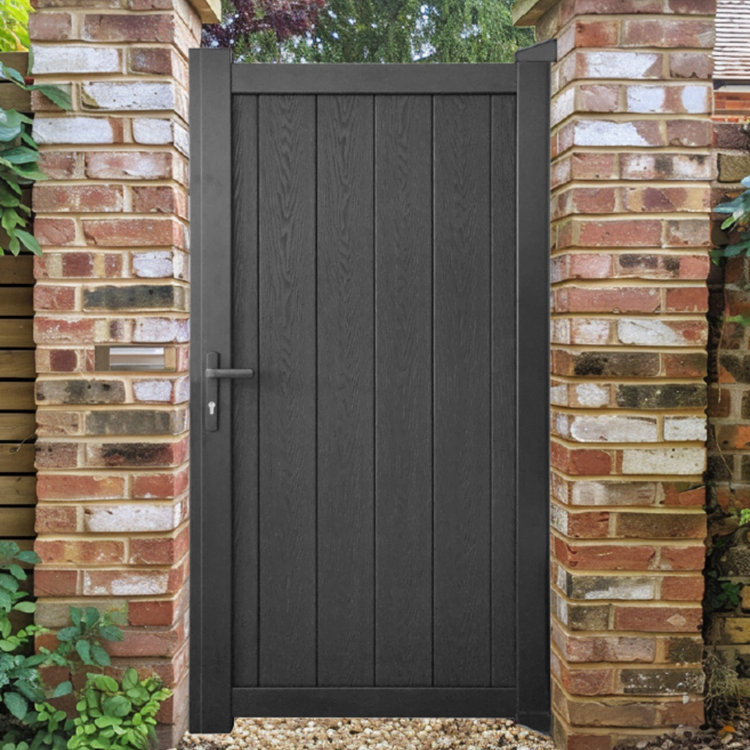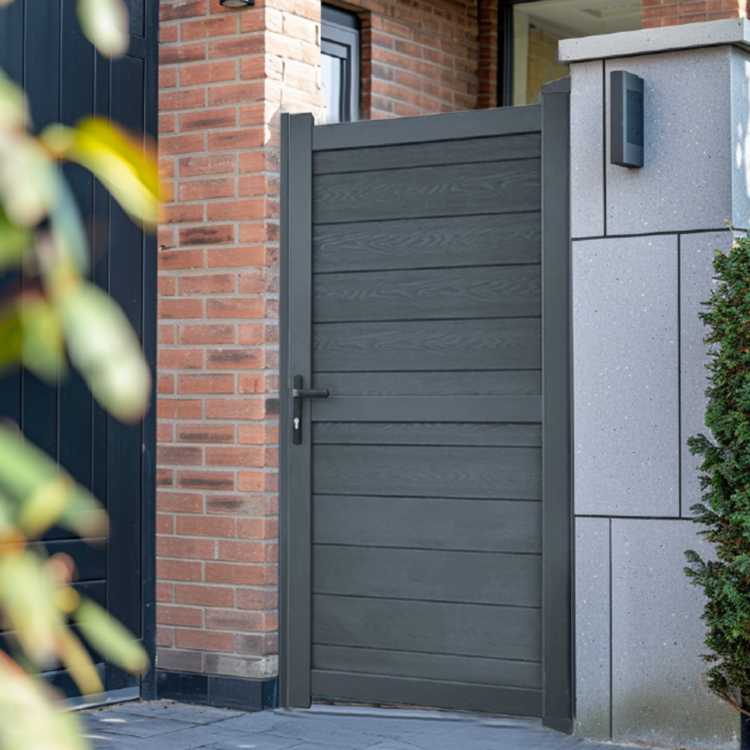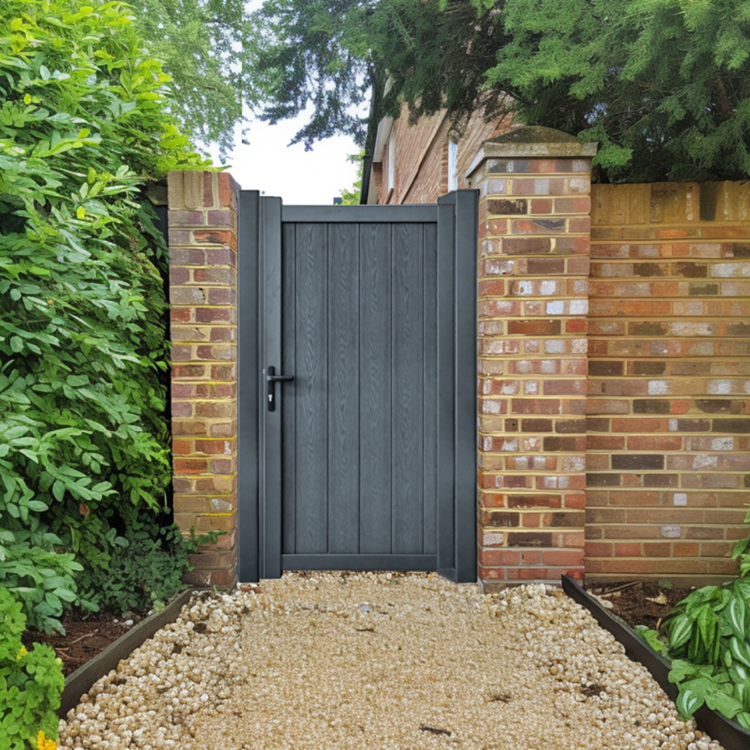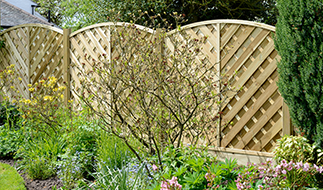Composite Gates Vs Traditional Gates
- Gates
- Railings
- Fencing
- Accessories
& Fitting- Sheds
& Storage- Garden Structures
- Design
& StyleMetal Gates & Railings- Info
& HelpChoosing between composite and traditional gates is one of the biggest calls any homeowner makes when upgrading a garden or driveway. The decision goes well beyond first impressions, influencing ongoing upkeep, durability, and even the projects carbon footprint for years to come.

Understanding Composite Gate Construction
Composite gates blend recycled wood fibres with sturdy polymer resins, giving the look of natural timber while correcting many of wood's potential weaknesses. Thanks to this engineered mix, the gates shrug off moisture, fungal decay, and insect feastings-problems that often ruin classic wooden designs.
To make the boards, makers compress wood particles and synthetic polymers under high heat and pressure. The result is uniform density from top to bottom, so homeowners never face the warping, splitting, or blotchy fading that random knots and grain lines in regular timber can cause.
Traditional Gate Materials and Their Heritage
On the other hand, a traditional gate is usually built from solid slabs of oak, cedar, or well-treated softwood. These timbers have dressed British homes for hundreds of years and develop a handsome patina and slight rustle that many people still link with genuine craftsmanship.
Wrought iron and steel sit firmly in the traditional camp, prized for the solid security they bring. While each metal asks for its own kind of upkeep, a little attention can stretch their life across generations, making them a natural match for period homes or streets governed by strict design rules.
Durability and Weather Resistance Comparison
In the UK, no outdoor fixture can escape the weather for long. Classic timber gates expand and contract with the seasons, pushing joints apart and occasionally bending the boards. If rain finds a chink in the finish, rot can set in much faster than a homeowner hopes.
By contrast, composite materials shrug off temperature swings. Thanks to their polymer blend, they don’t drink in moisture, so swelling and shrinking are almost forgotten. That steadiness lets the gate swing freely year after year and spares the hinges the slow death of misalignment.
Still, wood often takes a harder knock. A solid timber panel will dent rather than crack if a bicycle hits it at speed, whereas composites can chip under the same blow, though such stress is rare in everyday use around the home.

Maintenance Requirements and Long-term Costs
Old-fashioned timber gates ask for a steady commitment if you want them to look good and stay strong. Once a year you need to slather on wood preservative, stain, or paint to keep moisture and UV rays at bay. The moving parts need a squirt of lubricant now and then, and hinges or latches might give out after a few seasons outside.
In contrast, composite gates almost erase that chore list. The engineered material shrugs off fading, staining, and harsh weather, so it never needs a special protectant. A simple rinse with soapy water is usually all the cleaning it asks. You still must check the hardware, but the stable frame puts far less strain on screws and brackets.
Because of these running costs, the gap in the sticker price often closes over years. Timber gates might look cheaper at the checkout, yet they quietly drain cash through repeated treatments and possible repairs. Composite versions hit the wallet harder up front, but they pay back that extra outlay by asking almost nothing to keep them presentable.
Aesthetic Considerations and Design Flexibility
Timber still has a lock on charm when it comes to heritage homes or listed streets. Its natural grain and the slow, dignified greying add character that paint, or plastic never quite matches. Skilled mills can also carve elaborate profiles that echo crown mouldings and small-period features.
Modern composite manufacturing has opened exciting aesthetic possibilities. Skilled texturing now imitates wood grain so well that even close inspection is fooled, and colour mixes run consistently from surface to centre. Unlike painted timber, scratches and small knocks on a through-colour composite panel fade into the background instead of revealing pale primer underneath.
When it comes to shaping, though, wood still has the edge. Craftspeople can rout intricate patterns, cut mortice-and-tenon joints, or steam-bend stock for sweeping curves-moves that are second nature with solid timber. Composites suit crisp contemporary lines, yet they usually balk at ornate joinery or tight radii and need special tooling for any curve.
Environmental Impact and Sustainability
More families now ask how a material affects the planet before placing an order. Because modern composites contain significant recycled plastic and reclaimed wood fibre, every gate diverted tons of leftover rubbish from landfill. Combine that with their long life and the potential for reduced replacements, and the high-energy production cycle feels a little less harsh.
Timber from certified forests remains genuinely renewable and usually carries lower embodied energy. The catch is that unavoidable preservatives, paints, and oils lengthen nightlife, and frequent replacements still eat through forests faster than many people realise.

Making the Right Choice for Your Property
Choosing between a composite or solid-wood gate ultimately comes down to personal priorities. Match the material to the houses style, local planning rules, the time and money any upkeep really costs, and the budget you plan to assign in five, ten, or twenty years.
Old homes in conservation zones, or places that clearly show their historic style, usually gain from using classic materials that blend with what is already there. On the other hand, newer houses or projects where low upkeep is a must often suit composite options better.
When each type is chosen and fitted correctly, both deliver solid results. The trick is to match the materials properties to the job needs, rather than treating one route as the answer for every situation.
- Railings



